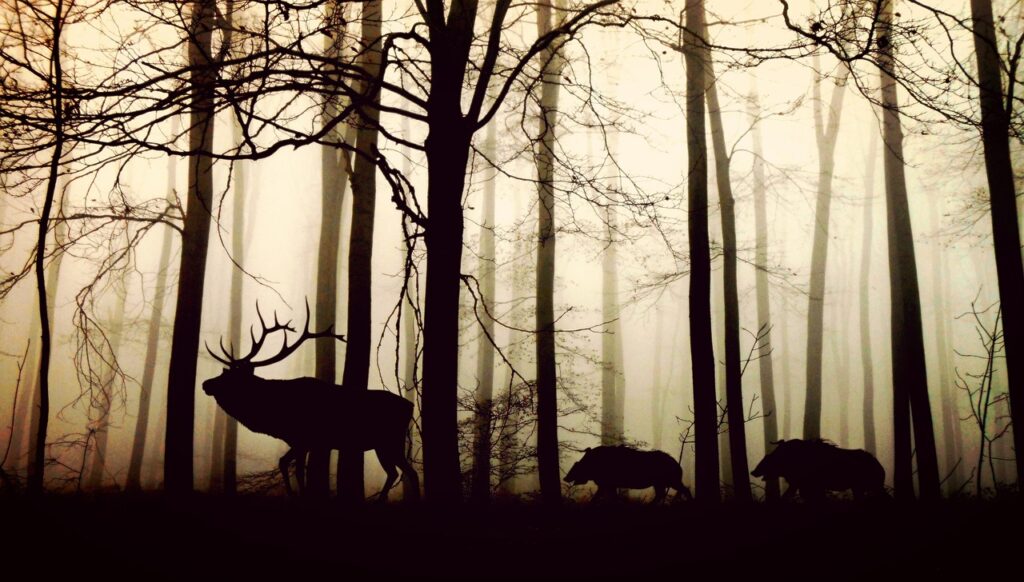
Contents
Become a pro at getting deer out during the day with these expert tricks. Fill their bellies with mouthwatering food plots like clover and soybeans. Craft their dream hideouts with cozy cover and comfy bedding areas. Stay stealthy and avoid scaring them off with minimal disturbance. Mask your scent using top-notch odor-blocking techniques and gear. Take a strategic stance by setting up in prime hunting spots, like high-traffic zones and feeding areas. Finally, embrace the waiting game and be patient. Stay still and silent, giving deer the confidence to step into the spotlight during daylight. Level up your hunting skills and dominate the deer scene with these expert strategies. Get ready for some epic daytime action!
Encouraging deer to come out during daylight hours can be a combination of strategic planning, habitat management, and understanding deer behavior. Here are some tips to increase your chances of getting deer to appear during the day:
Provide Adequate Food Sources: Deer are more likely to be active during the day when there is an abundant and easily accessible food supply. Planting food plots or maintaining existing food sources like clover, soybeans, or corn can attract deer and encourage daytime feeding.
Habitat Improvement: Enhance the habitat on your property by creating thick cover and bedding areas. Deer feel safer and more secure in areas with adequate cover, which may prompt them to be more active during daylight. Planting shrubs, trees, and tall grasses can help create suitable bedding areas.
Water Sources
Ensure there are reliable water sources available for deer, especially during dry periods. By providing accessible water, you increase the likelihood of deer visiting your property during the day to drink and stay hydrated.
Minimize Human Disturbance: Limit human activity and disturbances in the areas where you want deer to come out during the day. Avoid unnecessary visits, keep noise levels down, and refrain from disturbing bedding areas. Reducing human presence and pressure can help deer feel more at ease and increase their daytime activity.
Scent Control
Implement scent control measures to minimize human scent in the hunting area. Use scent-reducing soaps, laundry detergents, and sprays, as well as clothing designed to reduce odors. By minimizing your scent, you decrease the likelihood of alerting deer to your presence.
Optimal Hunting Locations
Set up hunting blinds or stands in areas that are known to have high deer activity, such as travel corridors, transition zones between habitats, or near feeding areas. Scouting and understanding deer movement patterns can help you choose the best spots for hunting during the day.
Learning how to gut a deer is a vital skill for hunters, especially if you want to make the most out of your harvest. Here’s a quick rundown for all you young adults out there. First, find a good spot, maybe somewhere a bit elevated, and gather up the tools you’ll need: a sharp knife, some gloves, and a bone saw. Start by making a small cut along the deer’s belly, careful not to nick any guts. Slowly open up the body, cutting the diaphragm and gently removing the organs. Avoid hitting the bladder or intestines. Once the organs are out, give the cavity a good rinse and dry it off. With practice, gutting a deer becomes second nature, ensuring you can get your game ready with ease
Hunt During Transitional Times
Focus your hunting efforts during periods of transition between feeding and bedding areas, such as early mornings or late afternoons. Deer are more likely to be on the move during these times, increasing your chances of encountering them during daylight.
Practice Patience
Patience is key when waiting for deer to come out during the day. Allow enough time for deer to feel comfortable and move into the open areas. Avoid unnecessary movements, remain still, and maintain a vigilant watch.
Conclusion
To get those deer out and about during the day, it’s all about smart planning and understanding their habits. Create an enticing buffet by planting tasty food plots like clover and soybeans. Make their habitat comfy with thick covers and bedding areas where they can feel safe. Keep your human presence on the down-low to avoid scaring them off, and use scent-control products to mask your smell. Set up shops in prime locations where they like to hang out, like travel corridors or feeding areas. Be patient, stay still, and wait for the magic to happen. Just remember, deer can be unpredictable, so adapt your approach and stay within the rules. By following these tips, you’ll increase your chances of seeing those majestic creatures strutting their stuff in broad daylight. Good luck and happy hunting!
